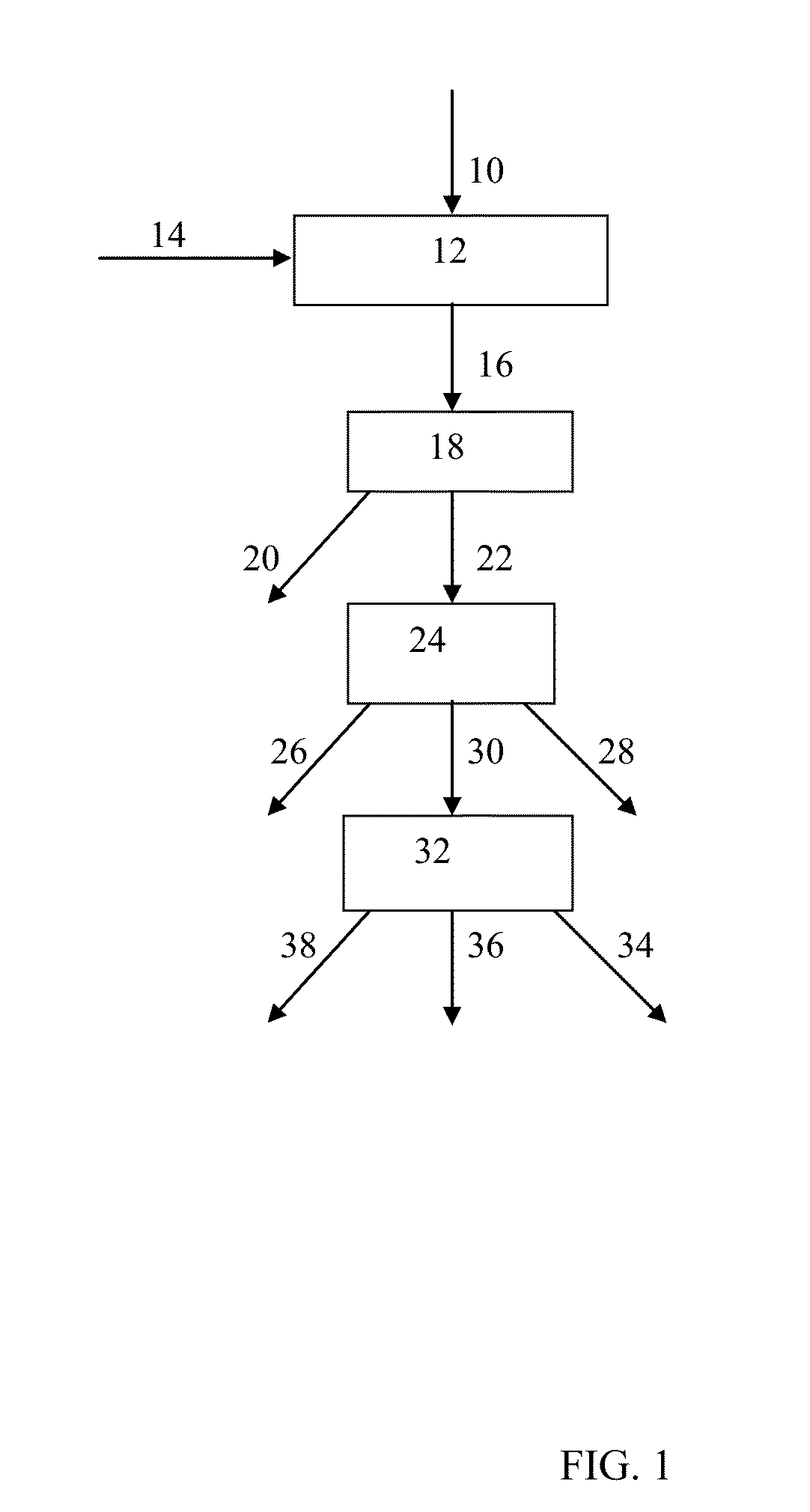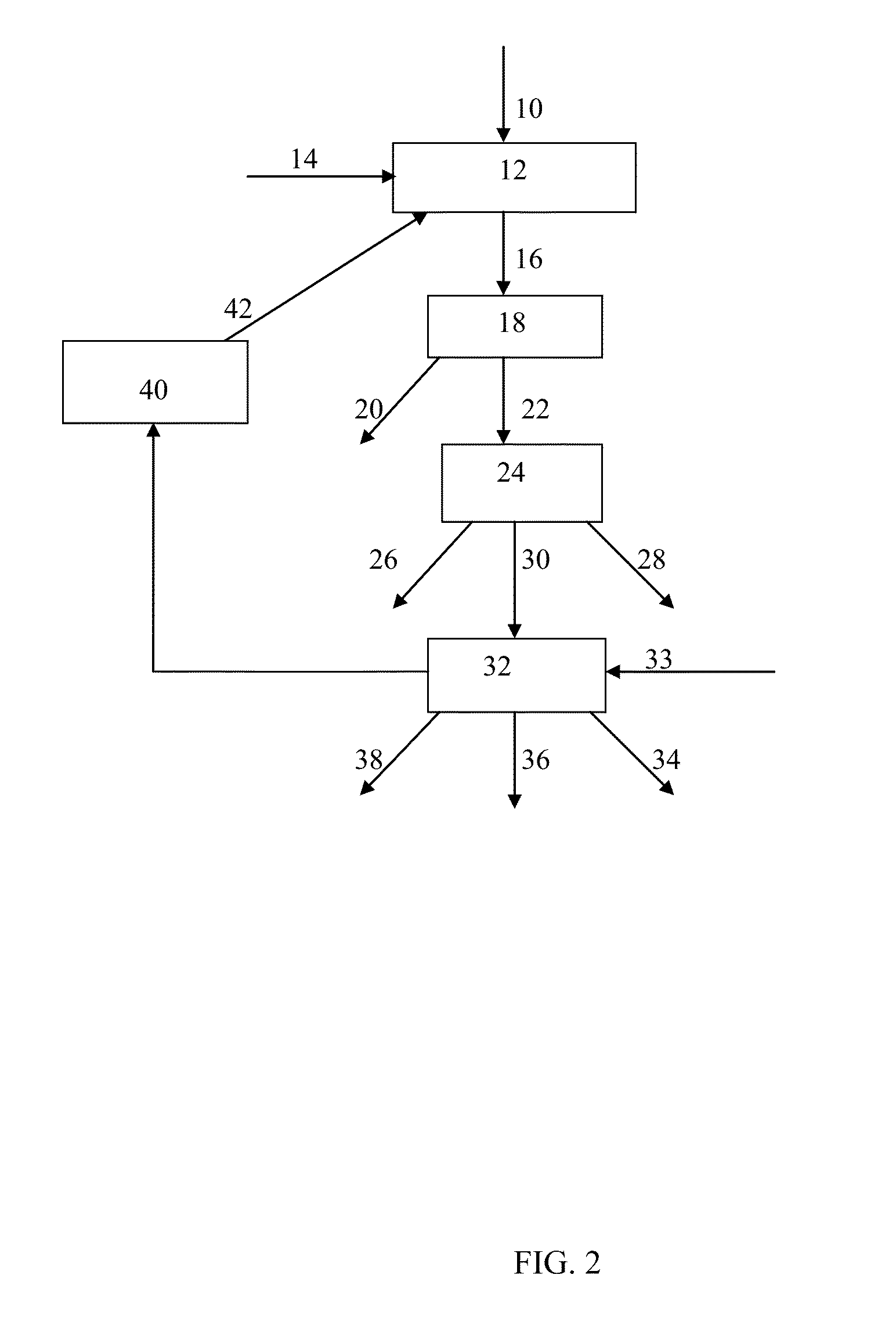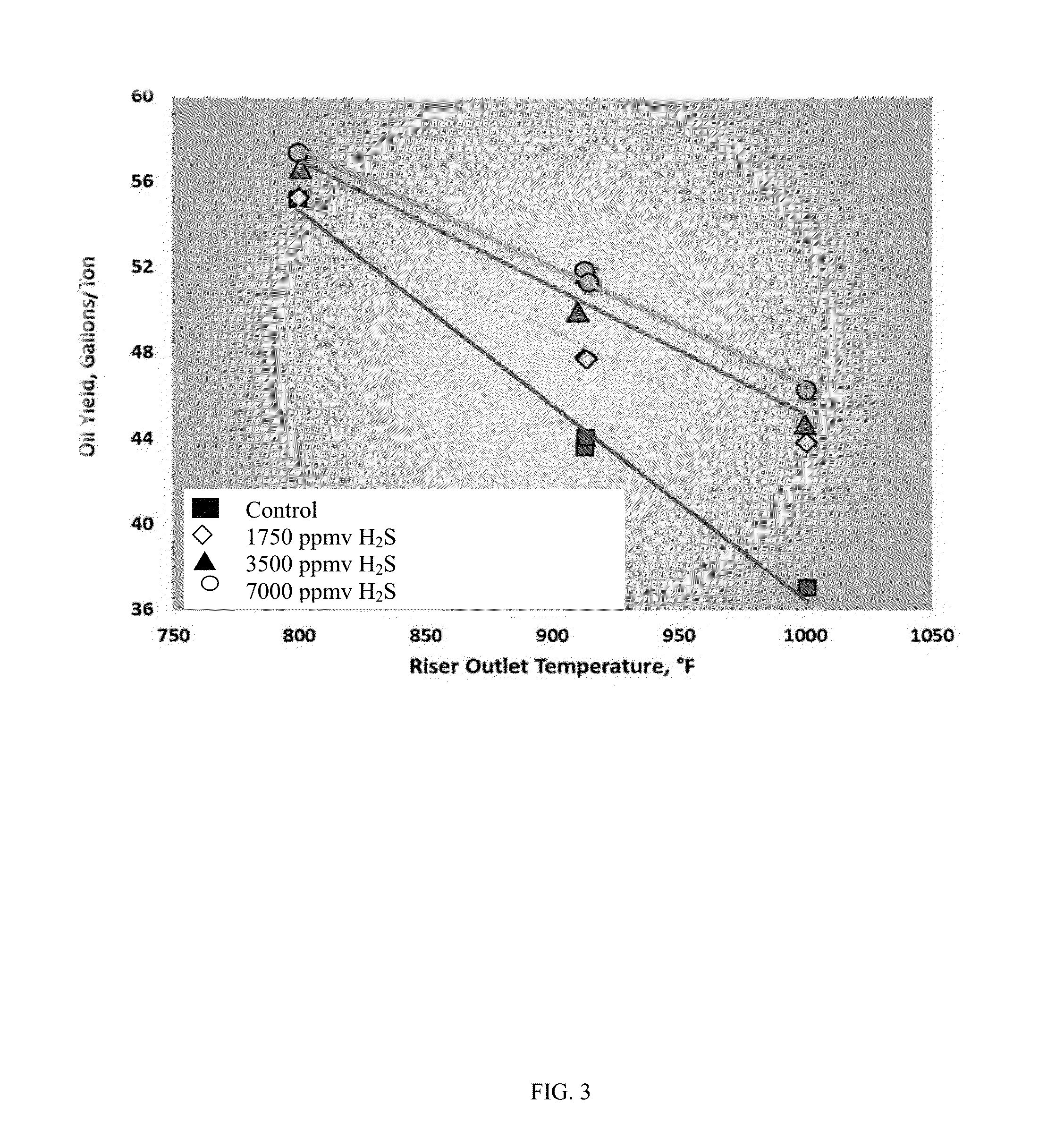Method of thermolyzing biomass in presence of hydrogen sulfide
a technology of biomass and hydrogen sulfide, which is applied in the direction of biofuels, organic chemistry, chemistry apparatus and processes, etc., can solve the problems of reducing and achieve the effect of enhancing the yield of bio-oil
- Summary
- Abstract
- Description
- Claims
- Application Information
AI Technical Summary
Benefits of technology
Problems solved by technology
Method used
Image
Examples
examples
[0056]A lignocellulosic biomass was subjected to thermolysis in the presence of a zeolitic and clay containing catalyst in a fluidized bed thermocatalytic biomass conversion unit wherein the lignocellulosic material was converted into a bio-oil containing feedstream. Nitrogen was used as a lift gas. Hydrogen sulfide was injected into lift gas wherein (in different runs), the amount of hydrogen sulfide injected was 1750 ppmv, 3500 ppmv and 7000 ppmv relative to the nitrogen. The hydrogen sulfide comprised 0.6, 1.2 and 2.4 weight percent relative to the biomass feed. In addition, a control run using no hydrogen sulfide was conducted. For the stated injection amounts of hydrogen sulfide and the control, thermolysis was conducted at three riser outlet temperatures—800° F., 913° F. and 1000° F.—for one hour followed by a 2 hour run at 913° F. in order to allow for hydrogen sulfide equilibration. Solids and bio-oil were separated from the converted biomass. For the control and each inject...
PUM
 Login to View More
Login to View More Abstract
Description
Claims
Application Information
 Login to View More
Login to View More - R&D
- Intellectual Property
- Life Sciences
- Materials
- Tech Scout
- Unparalleled Data Quality
- Higher Quality Content
- 60% Fewer Hallucinations
Browse by: Latest US Patents, China's latest patents, Technical Efficacy Thesaurus, Application Domain, Technology Topic, Popular Technical Reports.
© 2025 PatSnap. All rights reserved.Legal|Privacy policy|Modern Slavery Act Transparency Statement|Sitemap|About US| Contact US: help@patsnap.com



